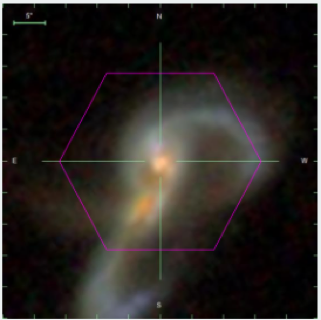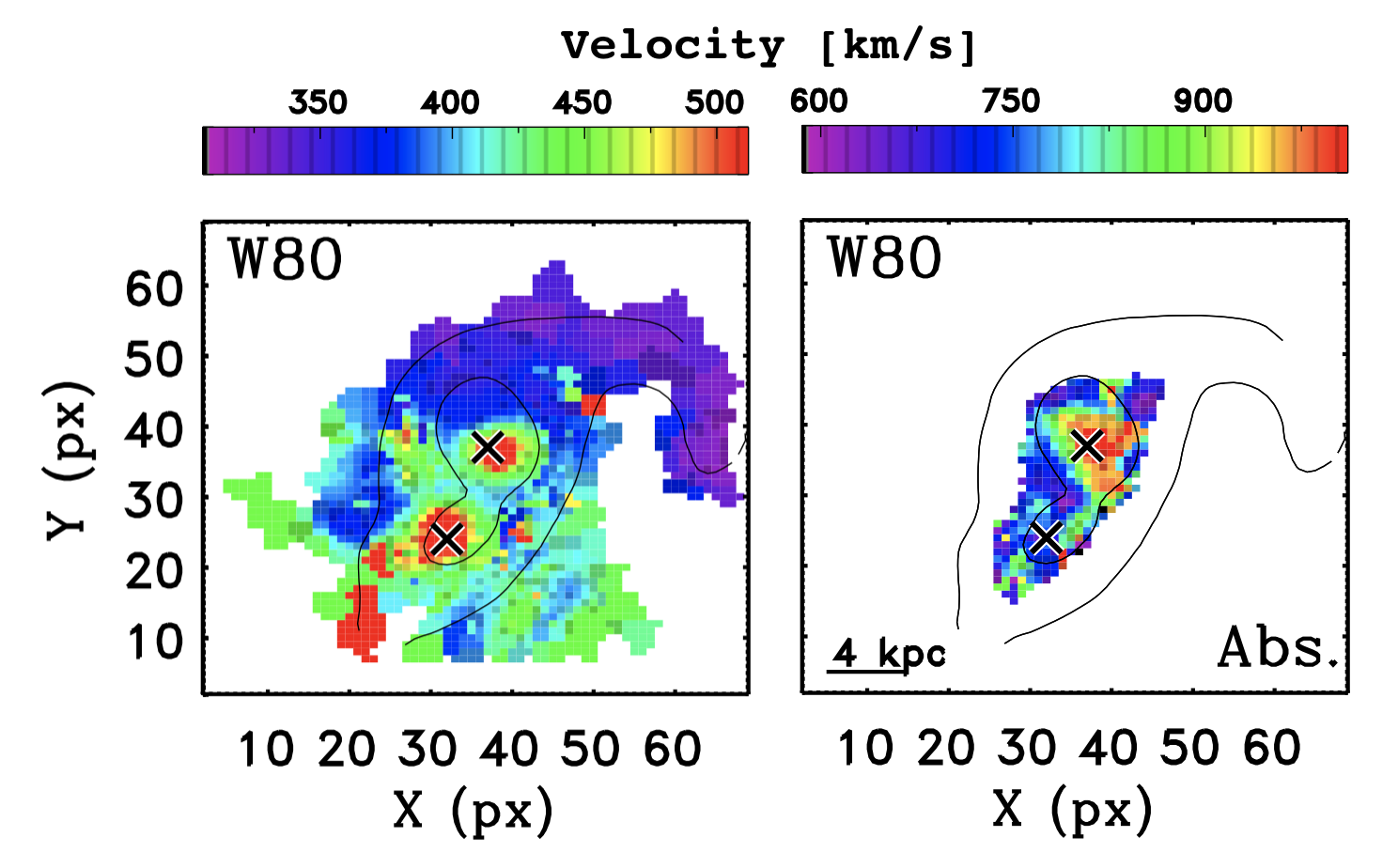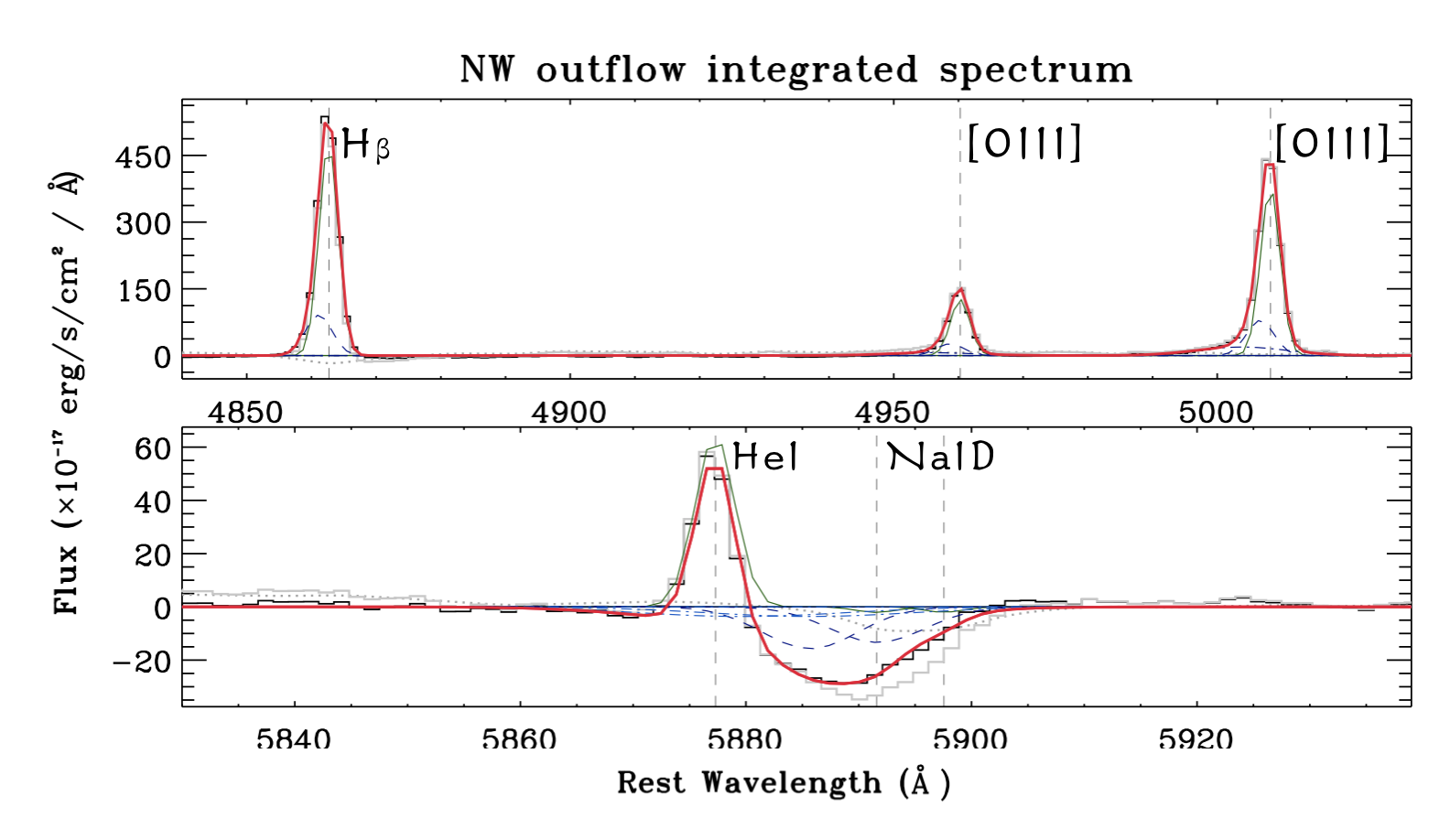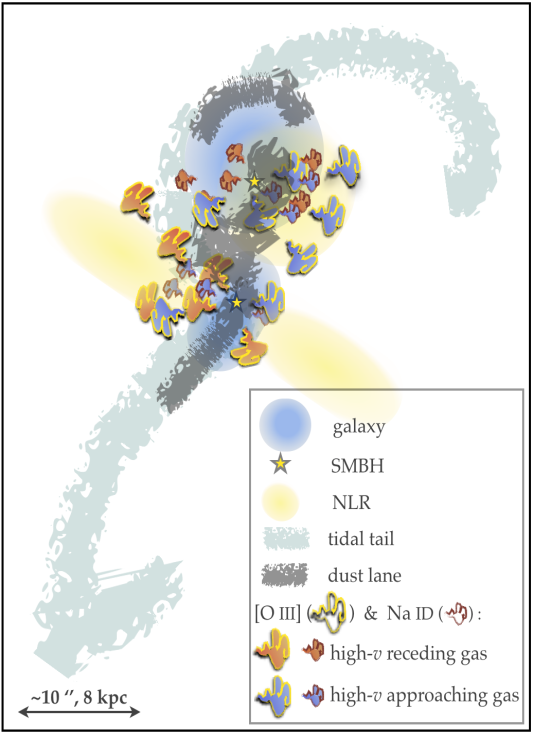Ionized and atomic outflows in the nearby merging system Mkn 848
The understanding of the mechanisms regulating the emergence and evolution of galaxies from the Big Bang, with their rich range of properties across cosmic time, constitutes a major goal of modern Astrophysics. During the last decades, important advances have been made from a theoretical viewpoint as well as from the observational side. However, important questions remain unanswered. Why the properties of the supermassive Black Holes (SMBH) found at the centre of galaxies are highly correlated with those of the host galaxies? Why models predict more massive galaxies than observed? How the intergalactic medium is enriched by metals?
Powerful gas outflows are routinely invoked to give answers to the above questions. They are originated either during the SMBH growth, when the nuclear object becomes visible as active galactic nucleus (AGN) and accretion disc winds are launched (AGN-driven outflows), or from stellar winds and supernovae explosions (star formation (SF)-driven outflows). Outflows are expected to affect the physical and dynamical conditions of the surrounding medium, hence regulating with a feedback mechanism the formation of new stars and the gas accretion onto the SMBH. However, we are still far from being able to include in detail the physics of outflows to galaxy models, and to understand their effects on galaxy evolution.
The recent work led by Michele Perna and with the participation, among others, of Giovanni Cresci, Alessandro Marconi and Filippo Mannucci from the Arcetri Astrophysical Observatory, focuses on the study of the kinematic and physical properties of powerful outflows in the nearby system Mkn 848, consisting of two merging galaxies at z ~ 0.04 (Fig. 1).
 |
Fig.1: SDSS three-color image of the merging system Mkn 848. The two nuclei have a projected separation of 7.5 kpc. Merging signatures are identified in the two long, highly curved tidal tails of gas and stars emerging from the north-west (NW) and south-east (SE) galaxies. |
The structure and multi-phase nature of the ejected material have been reconstructed thanks to a detailed analysis of integral field spectroscopy data from the survey MaNGA providing two-dimensional maps of stellar and gas velocities, as well as important physical properties of cool and warm gas. All these quantities have been used to constrain the outflows nature and their impact on the host galaxies. The authors revealed, for the first time, (emitting) ionised and (absorbing) neutral ejected gas in the two merging galaxies. They also detected the Na ID emission across the MaNGA field-of-view, so far detected in only other two galaxies. All these gas components are reasonably associated with strong AGN-driven outflows. The outflowing material reaches velocities as high as 600-1200 km/s, hence involving tremendous amount of energy that is transferred from the vicinity of the SMBH to kiloparsec scales (Fig. 2).
 |
 |
| Fig. 2: Upper panel: Line widths (W80) of the ionized [OIII] (left) and neutral NaID (right) gas. The broadening of the line features in the regions associated with orange/red colors (high velocities) is unequivocally due to outflows. Lower panel: Integrated spectra extracted from the red/orange regions in the upper panel showing very extended wings associated with the [OIII] emission line profiles and the very broad NaID absorption features. Figures taken from Perna et al 2019. |
Among many other results, this work shows that detailed multi-phase studies are required to comprehensively characterise the outflows. Figure 3 shows a cartoon for Mkn 848, illustrating the reconstructd spatial configuration of the two merging galaxies and the mulit-phase outflows, as well as the gas ionization conditions. The authors found that the neutral outflow component might be related to outflow energetics similar to or even higher than those of the ionized component. This result further emphasises the need for follow-up observations aimed at detecting and characterising the different outflow phases in individual targets.
 |
Fig. 3: Cartoon illustration for Mkn 848. The blue ellipses and the black and yellow stars represent the galaxies and the central SMBHs, respectively, with the near edge-on orientation for the SE system and the almost face-on configuration of the NW galaxy. The cyan and grey areas refer to the tidal arms and the dust observed in the SDSS three-color image. The extended and tenuous yellow area indicates the regions associated with AGN ionization: in the SE system we observe an extended narrow-line-region (NLR) close to the plane of the sky; in the NW system the almost face-on configuration suggests that the NLR axis is close to the line-of-sight. The clouds indicate outflows and distinguish between ionized (yellow contour) and atomic (brown contour) gas, as well as between receding (red filled) and approaching (blue filled) material. The collected information suggest AGN-driven biconical outflows in the two merging galaxies. Figure taken from Perna et al 2019. |
The results of this work are published in “Multi-phase outflows in Mkn 848 observed with SDSS-MaNGA Integral Field Spectroscopy”,M. Perna, G. Cresci, M. Brusa, G. Lanzuisi, A. Concas, V. Mainieri, F. Mannucci and A. Marconi, Astronomy and Astrophysics, in press.
Edited by M. Perna and A. Gallazzi



